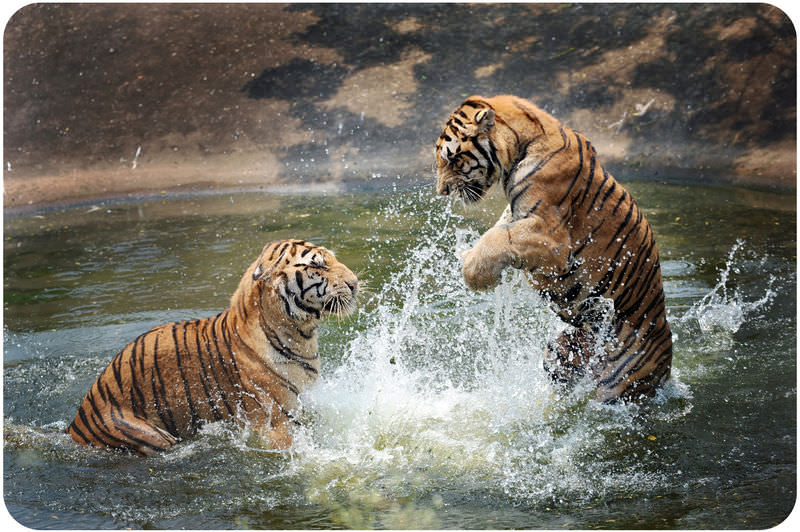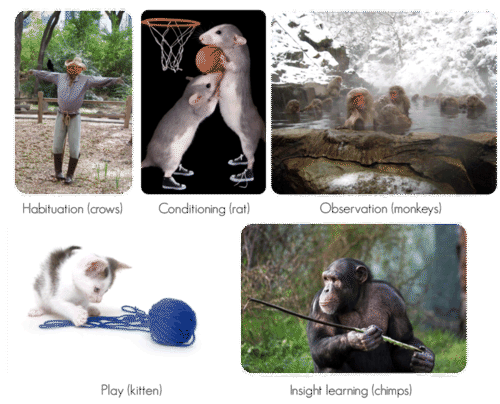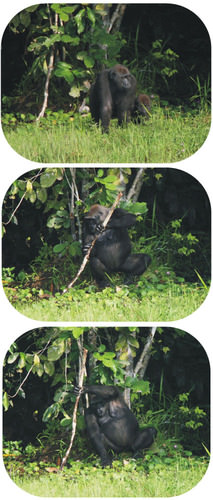10.5: Learned Behavior
- Page ID
- 1399
\( \newcommand{\vecs}[1]{\overset { \scriptstyle \rightharpoonup} {\mathbf{#1}} } \)
\( \newcommand{\vecd}[1]{\overset{-\!-\!\rightharpoonup}{\vphantom{a}\smash {#1}}} \)
\( \newcommand{\dsum}{\displaystyle\sum\limits} \)
\( \newcommand{\dint}{\displaystyle\int\limits} \)
\( \newcommand{\dlim}{\displaystyle\lim\limits} \)
\( \newcommand{\id}{\mathrm{id}}\) \( \newcommand{\Span}{\mathrm{span}}\)
( \newcommand{\kernel}{\mathrm{null}\,}\) \( \newcommand{\range}{\mathrm{range}\,}\)
\( \newcommand{\RealPart}{\mathrm{Re}}\) \( \newcommand{\ImaginaryPart}{\mathrm{Im}}\)
\( \newcommand{\Argument}{\mathrm{Arg}}\) \( \newcommand{\norm}[1]{\| #1 \|}\)
\( \newcommand{\inner}[2]{\langle #1, #2 \rangle}\)
\( \newcommand{\Span}{\mathrm{span}}\)
\( \newcommand{\id}{\mathrm{id}}\)
\( \newcommand{\Span}{\mathrm{span}}\)
\( \newcommand{\kernel}{\mathrm{null}\,}\)
\( \newcommand{\range}{\mathrm{range}\,}\)
\( \newcommand{\RealPart}{\mathrm{Re}}\)
\( \newcommand{\ImaginaryPart}{\mathrm{Im}}\)
\( \newcommand{\Argument}{\mathrm{Arg}}\)
\( \newcommand{\norm}[1]{\| #1 \|}\)
\( \newcommand{\inner}[2]{\langle #1, #2 \rangle}\)
\( \newcommand{\Span}{\mathrm{span}}\) \( \newcommand{\AA}{\unicode[.8,0]{x212B}}\)
\( \newcommand{\vectorA}[1]{\vec{#1}} % arrow\)
\( \newcommand{\vectorAt}[1]{\vec{\text{#1}}} % arrow\)
\( \newcommand{\vectorB}[1]{\overset { \scriptstyle \rightharpoonup} {\mathbf{#1}} } \)
\( \newcommand{\vectorC}[1]{\textbf{#1}} \)
\( \newcommand{\vectorD}[1]{\overrightarrow{#1}} \)
\( \newcommand{\vectorDt}[1]{\overrightarrow{\text{#1}}} \)
\( \newcommand{\vectE}[1]{\overset{-\!-\!\rightharpoonup}{\vphantom{a}\smash{\mathbf {#1}}}} \)
\( \newcommand{\vecs}[1]{\overset { \scriptstyle \rightharpoonup} {\mathbf{#1}} } \)
\( \newcommand{\vecd}[1]{\overset{-\!-\!\rightharpoonup}{\vphantom{a}\smash {#1}}} \)
\(\newcommand{\avec}{\mathbf a}\) \(\newcommand{\bvec}{\mathbf b}\) \(\newcommand{\cvec}{\mathbf c}\) \(\newcommand{\dvec}{\mathbf d}\) \(\newcommand{\dtil}{\widetilde{\mathbf d}}\) \(\newcommand{\evec}{\mathbf e}\) \(\newcommand{\fvec}{\mathbf f}\) \(\newcommand{\nvec}{\mathbf n}\) \(\newcommand{\pvec}{\mathbf p}\) \(\newcommand{\qvec}{\mathbf q}\) \(\newcommand{\svec}{\mathbf s}\) \(\newcommand{\tvec}{\mathbf t}\) \(\newcommand{\uvec}{\mathbf u}\) \(\newcommand{\vvec}{\mathbf v}\) \(\newcommand{\wvec}{\mathbf w}\) \(\newcommand{\xvec}{\mathbf x}\) \(\newcommand{\yvec}{\mathbf y}\) \(\newcommand{\zvec}{\mathbf z}\) \(\newcommand{\rvec}{\mathbf r}\) \(\newcommand{\mvec}{\mathbf m}\) \(\newcommand{\zerovec}{\mathbf 0}\) \(\newcommand{\onevec}{\mathbf 1}\) \(\newcommand{\real}{\mathbb R}\) \(\newcommand{\twovec}[2]{\left[\begin{array}{r}#1 \\ #2 \end{array}\right]}\) \(\newcommand{\ctwovec}[2]{\left[\begin{array}{c}#1 \\ #2 \end{array}\right]}\) \(\newcommand{\threevec}[3]{\left[\begin{array}{r}#1 \\ #2 \\ #3 \end{array}\right]}\) \(\newcommand{\cthreevec}[3]{\left[\begin{array}{c}#1 \\ #2 \\ #3 \end{array}\right]}\) \(\newcommand{\fourvec}[4]{\left[\begin{array}{r}#1 \\ #2 \\ #3 \\ #4 \end{array}\right]}\) \(\newcommand{\cfourvec}[4]{\left[\begin{array}{c}#1 \\ #2 \\ #3 \\ #4 \end{array}\right]}\) \(\newcommand{\fivevec}[5]{\left[\begin{array}{r}#1 \\ #2 \\ #3 \\ #4 \\ #5 \\ \end{array}\right]}\) \(\newcommand{\cfivevec}[5]{\left[\begin{array}{c}#1 \\ #2 \\ #3 \\ #4 \\ #5 \\ \end{array}\right]}\) \(\newcommand{\mattwo}[4]{\left[\begin{array}{rr}#1 \amp #2 \\ #3 \amp #4 \\ \end{array}\right]}\) \(\newcommand{\laspan}[1]{\text{Span}\{#1\}}\) \(\newcommand{\bcal}{\cal B}\) \(\newcommand{\ccal}{\cal C}\) \(\newcommand{\scal}{\cal S}\) \(\newcommand{\wcal}{\cal W}\) \(\newcommand{\ecal}{\cal E}\) \(\newcommand{\coords}[2]{\left\{#1\right\}_{#2}}\) \(\newcommand{\gray}[1]{\color{gray}{#1}}\) \(\newcommand{\lgray}[1]{\color{lightgray}{#1}}\) \(\newcommand{\rank}{\operatorname{rank}}\) \(\newcommand{\row}{\text{Row}}\) \(\newcommand{\col}{\text{Col}}\) \(\renewcommand{\row}{\text{Row}}\) \(\newcommand{\nul}{\text{Nul}}\) \(\newcommand{\var}{\text{Var}}\) \(\newcommand{\corr}{\text{corr}}\) \(\newcommand{\len}[1]{\left|#1\right|}\) \(\newcommand{\bbar}{\overline{\bvec}}\) \(\newcommand{\bhat}{\widehat{\bvec}}\) \(\newcommand{\bperp}{\bvec^\perp}\) \(\newcommand{\xhat}{\widehat{\xvec}}\) \(\newcommand{\vhat}{\widehat{\vvec}}\) \(\newcommand{\uhat}{\widehat{\uvec}}\) \(\newcommand{\what}{\widehat{\wvec}}\) \(\newcommand{\Sighat}{\widehat{\Sigma}}\) \(\newcommand{\lt}{<}\) \(\newcommand{\gt}{>}\) \(\newcommand{\amp}{&}\) \(\definecolor{fillinmathshade}{gray}{0.9}\)
Fighting or playing?
You might think that these young tigers are fighting, but they’re really just playing. Like most other young mammals, tigers like to play. Why do mammals play? Is playing just for fun, or does it serve some other purpose as well? Playing is actually an important way of learning. By playing, these tigers are learning moves that will help them become successful predators as adults. Playing is just one of many ways that mammals and other animals learn how to behave.
Learned Behavior
Learning is a change in behavior that occurs as a result of experience. Compared with innate behaviors, learned behaviors are more flexible. They can be modified to suit changing conditions. This may make them more adaptive than innate behaviors. For example, drivers may have to modify how they drive (a learned behavior) when roads are wet or icy. Otherwise, they may lose control of their vehicle.
Animals may learn behaviors in a variety of ways. Some ways are quite simple. Others are more complex. Several types of learning are described in Figure below.
 Types of Learning. Five different ways that animals may learn behaviors are shown here. What have you learned in each of these ways?
Types of Learning. Five different ways that animals may learn behaviors are shown here. What have you learned in each of these ways?Insight Learning
Insight learning, which is based on past experience and reasoning, is a hallmark of the human animal. Humans have used insight learning to solve problems ranging from starting a fire to traveling to the moon. It usually involves coming up with new ways to solve problems. Insight learning generally happens quickly. An animal has a sudden flash of insight. Insight learning requires relatively great intelligence. Human beings use insight learning more than any other species. They have used their intelligence to solve problems ranging from inventing the wheel to flying rockets into space.
Think about problems you have solved. Maybe you figured out how to solve a new type of math problem or how to get to the next level of a video game. If you relied on your past experiences and reasoning to do it, then you were using insight learning.
One type of insight learning is making tools to solve problems. Scientists used to think that humans were the only animals intelligent enough to make tools. In fact, tool-making was believed to set humans apart from all other animals.
In 1960, primate expert Jane Goodall discovered that chimpanzees also make tools. She saw a chimpanzee strip leaves from a twig. Then he poked the twig into a hole in a termite mound. After termites climbed onto the twig, he pulled the twig out of the hole and ate the insects clinging to it. The chimpanzee had made a tool to “fish” for termites. He had used insight to solve a problem. Since then, chimpanzees have been seen making several different types of tools. For example, they sharpen sticks and use them as spears for hunting. They use stones as hammers to crack open nuts.
Scientists have also observed other species of animals making tools to solve problems. A crow was seen bending a piece of wire into a hook. Then the crow used the hook to pull food out of a tube.
An example of a gorilla using a walking stick is shown below (Figure below). Behaviors such as these show that other species of animals can use their experience and reasoning to solve problems. They can learn through insight.
 This gorilla is using a branch as a tool. She is leaning on it to keep her balance while she reaches down into swampy water to catch a fish.
This gorilla is using a branch as a tool. She is leaning on it to keep her balance while she reaches down into swampy water to catch a fish.Summary
- Learning is a change in behavior that occurs as a result of experience.
- Learned behaviors are adaptive because they are flexible. They can change if the environment changes.
- Behaviors can be learned in several different ways, including through play.
Review
- What is learning?
- Name three types of learning in animals.
- Compare and contrast instinct and learning.
| Image | Reference | Attributions |
 |
[Figure 1] | License: CC BY-NC |
 |
[Figure 2] | Credit: Scarecrow/crows: Image copyright Svetolk, 2013; Rat: Image copyright Cathy Keifer, 2014; Monkey: Flickr:Wajimacallit; Kitten: Image copyright Tony Campbell, 2014; Chimp: Image copyright Norma Cornes, 2014 Source: Monkey image http://www.flickr.com/photos/wajimacallit/2215859213/ ; rest of the images from http://www.shutterstock.com License: (Monkey) CC BY 2.0; (All others in set) License from Shutterstock |
 |
[Figure 3] | Credit: Thomas Breuer, Mireille Ndoundou-Hockemba, Vicki Fishlock/PLOS Biology Source: commons.wikimedia.org/wiki/File:Gorrila_tool_use-Efi.jpg License: CC BY 2.5 |

